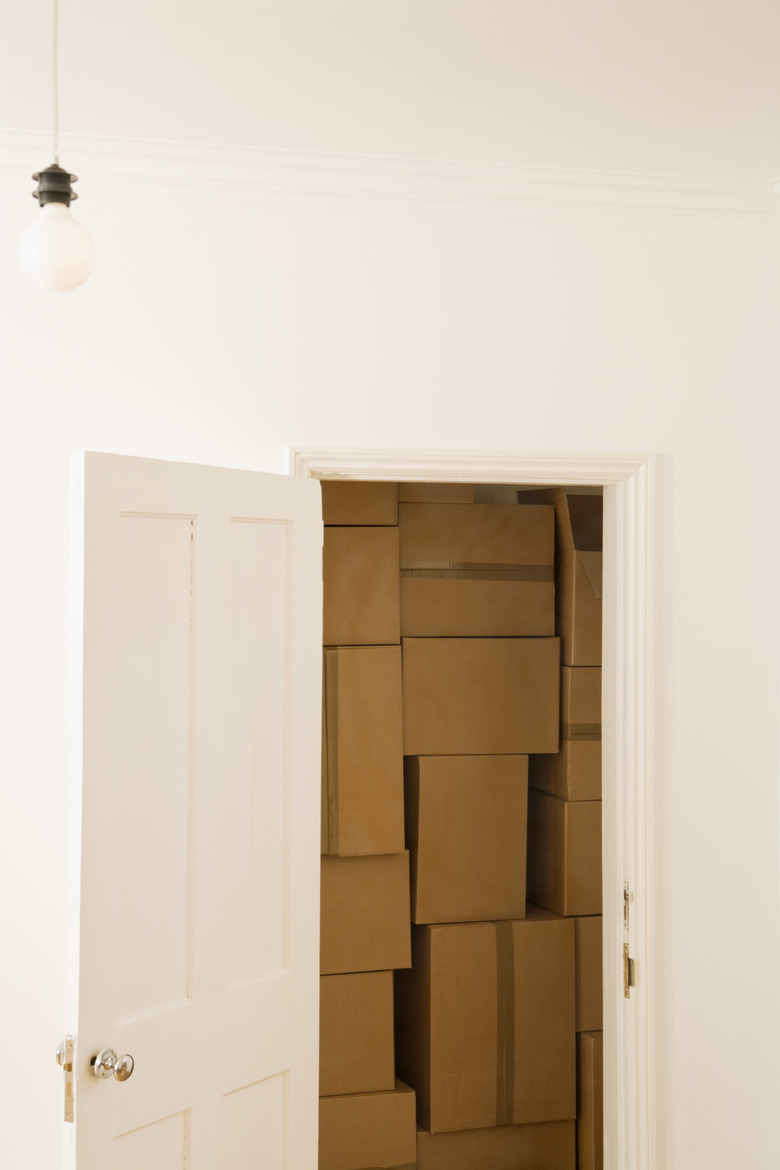Thermal Properties Of Cardboard
The thermal properties of cardboard make it a good insulator because it is a comparatively poor heat conductor. An engineer may design something that uses cardboard as an insulator because it is a low-cost material or she may need to make an improvisational solution on the spot and use cardboard as a heat-retaining solution. Additionally, the common person may use cardboard as an insulator to keep the relative heat inside a structure such as a home or car.
Thermal Properties
Thermal Properties
The term "thermal properties" describes the efficiency or rate at which a material conducts or transfers heat. It is important for engineers, manufactures and scientists to know the thermal properties of the materials they use in their work. There are different types of cardboard that will ignite between 400 and 800 degrees Fahrenheit. Special cardboard can sustain temperatures over 1,000 F.
Conductivity
Conductivity
There are several formulas and systems used to measure the conductivity of a material. To complicate things, the conductivity of a material changes as the temperature of the material changes. Therefore, it is common to use a comparative measurement to describe the thermal conductivity of a material. According to Ogden Manufacturing, the thermal conductivity of cardboard is about one-third of water's. Ogden rates cardboard with a thermal conductivity rating of 0.5 and water with a conductivity rating of 1.6 expressed in gram–calories per second per square centimeter measured in degrees Celsius.
Blocking Heat
Blocking Heat
Materials with a low thermal conductivity are good for blocking heat transfer. They can be used to keep heat from transferring from one object or location to another. An example of this in practice is using cardboard to cover a damaged window. In a normal situation, a glass window serves as a material that both keeps heat from transferring in or out of a structure. However, if the glass is damaged, it may not be immediately replaceable. You've probably seen a car with a broken window that has been tapped over with a garbage bag. The garbage bag serves as an insulator, but it is thin and fragile, making it unreliable as a temporary solution. The plastic garbage bag prevents heat from entering or leaving the car at its particular point. Fitting cardboard into the broken window will serve as a sturdier, low-conductivity solution. It keeps the cold air in the vehicle when there is hot weather and the hot air in the vehicle when there is cold weather.
Trapping Heat
Trapping Heat
Insulators with low conductivity like cardboard are useful for trapping heat inside of an object. A common use for this is a homemade solar oven. You can cover the inside of a cardboard box with a reflective material to amplify and trap heat from sunlight. The cardboard's poor conductivity will help it keep heat from leaving the solar oven.
Cite This Article
MLA
Stone, Dan. "Thermal Properties Of Cardboard" sciencing.com, https://www.sciencing.com/info-8789172-thermal-properties-cardboard/. 7 August 2017.
APA
Stone, Dan. (2017, August 7). Thermal Properties Of Cardboard. sciencing.com. Retrieved from https://www.sciencing.com/info-8789172-thermal-properties-cardboard/
Chicago
Stone, Dan. Thermal Properties Of Cardboard last modified March 24, 2022. https://www.sciencing.com/info-8789172-thermal-properties-cardboard/
